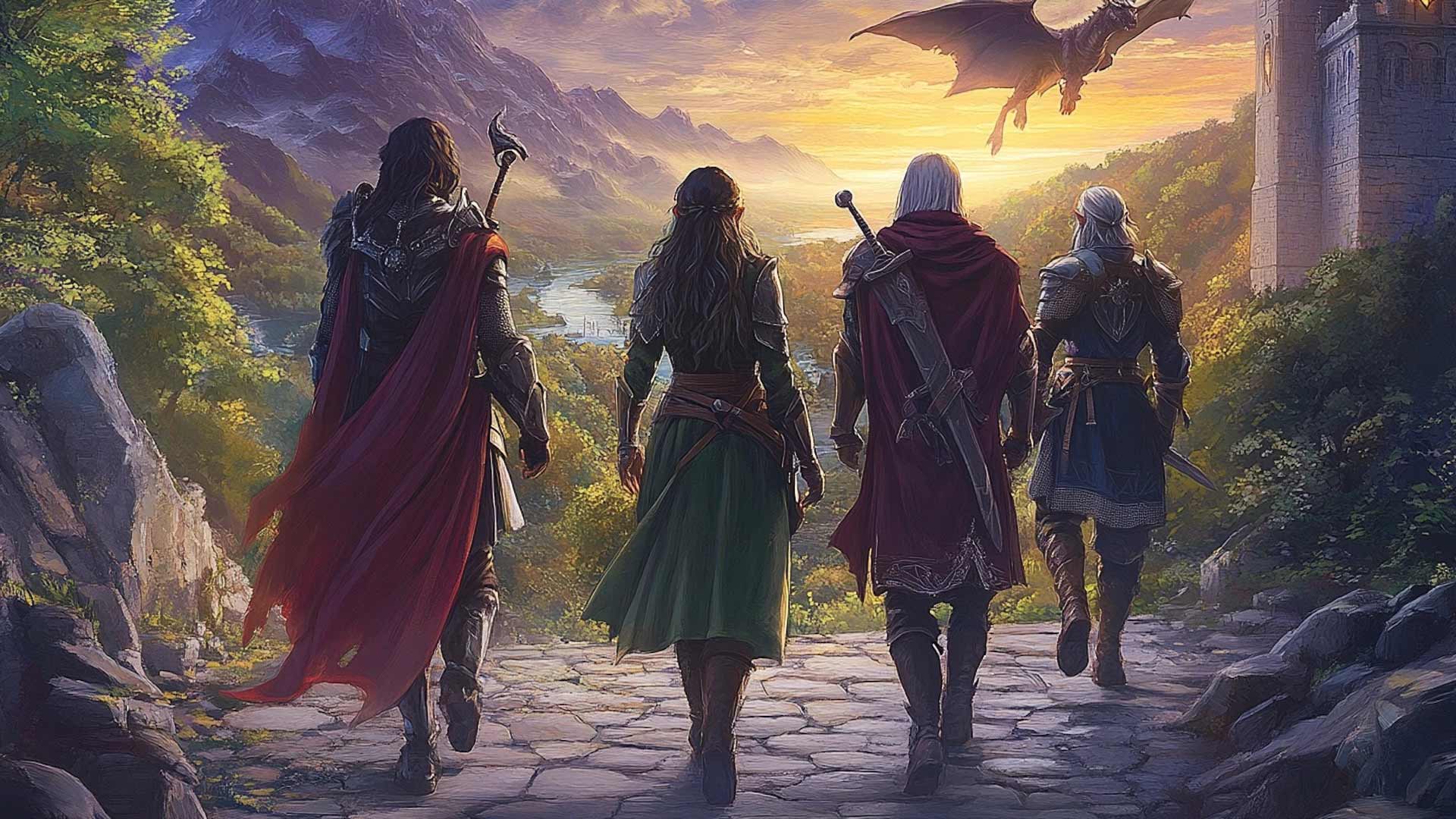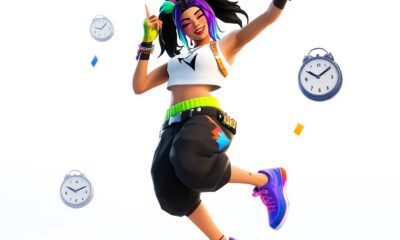All
Game Development Grants to Boost Your Project in 2025
Explore game development grants available in 2025. Learn how to apply for funding, what to look for in a grant, and how to avoid scams.

Game development grants are financial awards provided to developers to support the creation, production, and distribution of video games. These grants can alleviate the financial burden of development costs, enabling developers to focus on innovation and quality. When seeking grants, it’s essential to identify reputable programs that align with your project’s goals and to be cautious of potential scams.
What to Look for in a Grant
When considering applying for a game development grant, it’s important to assess the grant’s terms, conditions, and requirements carefully. Look for grants that align with your project’s goals, whether they’re focused on innovation, education, or specific genres of games. Understanding the grant’s purpose is crucial in ensuring that the funding will support the specific needs of your project. Pay attention to the eligibility criteria: Some grants may be restricted to specific regions or require certain technical qualifications. Additionally, review the financial details, including the amount offered, the timeline for disbursement, and whether the grant is one-time funding or recurring support. A transparent and clear application process is also vital—grants with straightforward requirements and realistic deadlines will help avoid unnecessary stress during the application process. Lastly, research the post-grant obligations—some grants may require developers to provide progress updates or share a portion of future earnings, so it’s important to understand these commitments before applying.
How Grants Are Used
Game development grants are incredibly valuable for independent developers and small studios, as they help alleviate the financial burden that often comes with creating a game. With limited resources, many developers face challenges in covering the high costs of technology, software, marketing, and labor. Grants provide crucial financial support that allows developers to focus more on creativity, innovation, and the technical aspects of game development without constantly worrying about funding. Whether it’s developing a prototype, hiring additional team members, purchasing necessary tools, or promoting the game once it’s complete, grants can fill in the gaps and make all the difference. In essence, these grants enable developers to push boundaries and bring their unique visions to life, without the added stress of financial strain. They can be a crucial catalyst in the growth and success of a project that may otherwise struggle to get off the ground.
How to Apply for a Grant
Applying for a game development grant typically involves a few key steps that can vary depending on the grant program. Start by carefully reading the grant’s guidelines to ensure your project meets all the eligibility criteria. Many grants require an application form, which may ask for detailed information about your project, including a project description, budget, timeline, and development goals. You’ll also likely need to submit a prototype or demo of your game to demonstrate its potential and your capabilities as a developer. Be sure to provide all requested documentation and follow the application instructions precisely. Some grants may also require references or letters of support from industry professionals or mentors. Once you’ve completed the application, double-check for any errors or missing information, as incomplete applications can be disqualified. Finally, submit your application before the deadline and be prepared to follow up if necessary. Patience is key, as grant review processes can take several weeks or months.
Game Development Grants
1. Epic MegaGrants
- About: Epic Games offers grants to support the development of innovative projects using their technology. Learn how to apply for an Epic MegaGrant : Fueling Innovation: Epic MegaGrants for UEFN Creators and Teams
- Requirements: Open to UEFN and UE developers, students, and educators worldwide.
2. Videogames and Esports Foundation (VEF) Grants
- About: VEF provides grants and scholarships to disenfranchised students, educators, game designers, streamers, and organizations in the gaming and esports industry.
- Requirements: Applicants must demonstrate a commitment to diversity and inclusion in gaming.
3. Indie Fund
- About: A collective of experienced game makers offering funding to independent game projects.
- Requirements: Developers must have a playable prototype and a clear vision for their game.
- About: Xsolla offers a range of solutions where developers can access resources and funding, while investors and publishers can discover quality new titles.
- Requirements: Open to developers with upcoming game development projects.
- About: A government-funded support program for the UK’s independent games development sector, providing production finance for prototype game development.
- Requirements: Open to UK-based independent game developers.
How to Avoid Grant Scams
While game development grants can be an incredible resource, developers should always be vigilant in ensuring they are applying for legitimate programs. Unfortunately, the increasing popularity of game development and the financial needs that come with it have led to scams targeting unsuspecting developers. To avoid falling victim to fraudulent grants, start by researching the organization offering the grant. Reputable programs will often have a clear track record, with testimonials or case studies from past recipients. It’s also important to ensure that the application process is transparent and doesn’t require upfront fees or unnecessary personal information that could be used for malicious purposes. Be wary of grants that promise “guaranteed” approval or ask for a percentage of future earnings in exchange for funding—these are often red flags. Additionally, look for well-known, established grant providers with a clear mission and guidelines, such as those supported by government organizations or reputable industry leaders. If something feels off or seems too good to be true, trust your instincts and double-check the program’s credibility before proceeding. Avoiding scams is crucial in securing legitimate funding and ensuring the continued success of your game development project.
Setting Realistic Goals and Expectations
When applying for game development grants, it’s crucial to set achievable goals and manage expectations. Understand that competition is fierce, and securing a grant can be a lengthy process. Ensure your application is thorough, highlighting how the grant will contribute to your project’s success. Be prepared to provide detailed budgets, timelines, and project plans. Remember, while grants can provide significant support, they are often just one component of a comprehensive funding strategy.
Let’s Talk More About Grants
Join the conversation in our Discord!
All
Unlock the Power of TikTok Effect House: Create Viral AR Effects and Get Paid

TikTok isn’t just a platform for viral dances and lip-syncs—it’s now a serious launchpad for digital creators, designers, and tech-savvy artists. One of the most exciting ways to break into TikTok’s creator economy is through Effect House, TikTok’s augmented reality (AR) development platform. If you’re a 3D designer, animator, or simply passionate about creative tech, TikTok Effect House offers a way to build interactive effects, reach millions, and even make money doing it.
What Is TikTok Effect House?
Effect House is TikTok’s official AR platform that lets creators design and publish interactive effects (also called AR filters) for TikTok videos. Think of those face filters, green-screen backgrounds, games, or immersive visual effects you see on trending videos—most of them come from Effect House creators.
Launched publicly in 2022, Effect House democratized AR creation by offering intuitive tools, tutorials, templates, and a community hub. It allows anyone from hobbyists to professional 3D artists to publish their effects directly on TikTok and gain visibility.
TikTok Effect House Audience Reach & Metrics
- Over 1 billion monthly active users on TikTok globally.
- TikTok effects using Effect House tools have powered billions of video views.
- Top effects can gain millions of uses within days of going viral.
- More than 2 million creators have joined the Effect House platform since its public release.
With that kind of exposure, becoming an Effect House creator is a golden opportunity to build your personal brand, enhance your portfolio, and tap into new income streams.
How Much Can You Earn With TikTok Effect House?
TikTok launched an Effect Creator Rewards Program in 2023, allowing creators to monetize popular effects. Here’s what you need to know:
Earnings Potential:
- TikTok pays up to $700 per effect that reaches 500,000 unique video publishes in 90 days.
- For every additional 100,000 video publishes, creators can earn up to $140 extra, capped at $14,000 per effect.
- Some top creators reportedly earn $2,000–$10,000+ per month by developing a portfolio of high-performing effects.
🔍 Note: The rewards depend on unique video uses, not views. You’ll earn more as more TikTok users apply your effect in their own content.
How to Become a TikTok Effect House Creator
Ready to dive in? Follow these steps to get started with TikTok Effect House and start creating:
1. Download and Install Effect House
- Visit: https://effecthouse.tiktok.com
- Compatible with macOS and Windows.
- Minimum system requirements are listed on the site—make sure your computer supports 3D rendering and AR development.
2. Create a TikTok Account
- You need a TikTok account to link with Effect House.
- For best results, create a professional username that aligns with your creative identity.
3. Learn the Tools
Effect House includes:
- A node-based scripting system (similar to Spark AR or Lens Studio).
- 3D face tracking, segmentation, interaction triggers, and custom assets.
- Access beginner-friendly tutorials in the Learning Hub to get started.
4. Build Your First Effect
- Use templates or create from scratch.
- Keep effects interactive, shareable, and trend-relevant to boost adoption.
- Test your effect using TikTok’s preview feature.
5. Submit for Review
- All effects must pass TikTok’s content and safety review before going live.
- Approval typically takes 1–3 days. If longer, contact support.
6. Publish and Promote
- Share the effect’s link in your bio, on other platforms, or embed it in TikTok videos.
- Use popular hashtags and collaborate with creators to go viral.
7. Join the Rewards Program
- Once eligible, apply to TikTok’s Effect Creator Rewards Program in your dashboard.
- Continue to create effects regularly
- Track your performance and earnings through the Effect House portal.
Pro Tips to Maximize Your Success
- Ride trends: Sync your effects with trending TikTok sounds or challenges.
- Keep it fun and simple: The most viral effects are often easy to use and visually striking.
- Optimize performance: Keep file sizes light to ensure effects work on a wide range of devices.
- Engage with your community: Respond to users, encourage shares, and iterate based on feedback.
- Connect and network with Tik Tok Creators who like to feature effects.
- Participate in Tik Tok Effect House Contests, Competitions and Giveaways
- Use analytics: Monitor how many people are using your effect and tweak accordingly.
Being a TikTok Effect Creator can Open Doors
Becoming a TikTok Effect House creator opens the door to global visibility, creative expression, and real income. It doesn’t matter if you’re a seasoned 3D designer or a curious beginner, TikTok offers you the platform, tools, and rewards to turn your creativity into impact—and profit.
With millions of users looking for the next cool effect to spice up their content, now is the perfect time to join Effect House and start building.
All
UEFN & Fortnite Creative: Game Project Management Methodologies Explained
Learn Agile, Waterfall, and Hybrid project management methodologies for UEFN and Fortnite Creative. Discover how to choose the right one for your game development project.

Managing a UEFN (Unreal Editor for Fortnite) or Fortnite Creative project successfully requires more than just creative ideas—it demands a structured methodology. If you’re developing a simple mini-game or a complex adventure mode, project management methodologies help you stay on track, meet deadlines, and iterate efficiently. This article explores Agile, Waterfall, and Hybrid models, offers practical advice for choosing the best approach, and provides sample project charts using an adventure game as a case study.
Understanding and applying the right project management approach is particularly important in collaborative environments like UEFN, where multiple creators often work together across disciplines. Choosing the right method enables teams to minimize rework, streamline testing and iteration, and deliver polished and engaging content that aligns with player expectations.
What Are Project Management Methodologies in Game Development?
Project management methodologies are structured frameworks that help teams plan, execute, and manage game projects from concept to launch. They define workflows, communication styles, deliverables, and milestones.
In the context of Fortnite Creative and UEFN, these methodologies help:
- Coordinate level designers, scripters, and asset creators
- Organize timelines and iteration loops
- Integrate playtesting and community feedback
By aligning development workflows with a proven methodology, creators can better manage complexity, reduce risk, and accelerate delivery. Each methodology brings a unique set of practices tailored to different project types and team dynamics.
Project Management Methodologies for UEFN and Fortnite Creative Projects: Choosing and Using the Right One
Methodology 1: Agile Game Development
Overview
Agile emphasizes iteration, adaptability, and feedback. Teams work in short cycles (sprints) with frequent evaluations. It’s based on the principles of the Agile Manifesto, focusing on individuals and interactions, working software, customer collaboration, and responding to change. In game development, Agile is popular because it facilitates fast iteration and user-centered design, allowing teams to pivot quickly based on feedback.
Agile empowers teams to tackle uncertainty and creative challenges by breaking projects into manageable components. In UEFN, where gameplay ideas often evolve mid-development, Agile enables teams to validate ideas rapidly through prototyping and playtesting.
Key Concepts
- Iterations (Sprints): 1–4 week cycles
- Scrum Roles: Product Owner, Scrum Master, Team
- Ceremonies: Sprint Planning, Daily Stand-ups, Sprint Review, Retrospective
- Kanban Boards: Visual task tracking
Advantages
- Frequent playtesting and improvements
- Flexibility to adapt to creative changes
- Fast feedback loop from players or stakeholders
- Empowered, cross-functional teams with shared ownership of deliverables
Challenges
- Requires discipline to avoid feature creep
- Difficult to track overall progress without metrics
- Risk of inconsistent design if not managed carefully
- Less emphasis on documentation may create gaps in knowledge retention
Tools for Agile in UEFN
- Trello, Jira, Notion, Codecks, Asana
“Agile methodologies have become the de-facto standard in game development due to their adaptability and player-centric focus.” — Agile Game Development by Alistair Cockburn
Methodology 2: Waterfall
Overview
Waterfall is a linear, structured approach where each phase (Design, Development, Testing) must be completed before the next. It emphasizes comprehensive documentation, strict timelines, and predetermined deliverables. While less flexible than Agile, Waterfall provides strong clarity and control—making it useful for tightly scoped or publisher-driven projects.
In Fortnite Creative, Waterfall can work well for clearly defined experiences like a single-player narrative game, where all gameplay, art, and scripting elements are established upfront and changes during development are minimal.
Best For:
- Projects with fixed scope and requirements
- Short narrative experiences with predictable development
- Teams requiring well-documented workflows and approval checkpoints
Advantages
- Clear documentation and planning
- Straightforward milestone tracking
- Easier budget estimation
- Ideal for asset pipelines where detailed specs are fixed
Limitations
- Hard to adapt to feedback
- Risk of wasting time on early decisions that later prove faulty
- Limited flexibility for live updates or community-driven features
- Can delay valuable feedback until late stages of development
Methodology 3: Hybrid Models
Overview
Hybrid models, as stated in: Hybrid Game Development Models by Sarah Lee, combine the predictability of Waterfall with the adaptability of Agile. This approach acknowledges that no single methodology fits all projects and blends elements to suit the team’s strengths, goals, and constraints. It’s especially effective in game development, where some features require flexibility (game mechanics) while others need predictability (cutscenes, localization).
Hybrid approaches are particularly useful in UEFN projects that balance creative experimentation with structured milestones, such as large collaborative adventure games that require both artistic freedom and technical checkpoints.
Examples
- Agile-Waterfall: Waterfall for planning; Agile for execution
- Iterative-Incremental: Gradual build-up with cycles
- Lean-Agile: Reduces waste; maximizes feature value
- Kanban-Scrum: Combines visual flow with sprint planning
Use Cases in Fortnite Creative
- Adventure maps with clear start-to-finish gameplay but evolving mechanics
- PvP arenas that need user feedback-driven balance updates
- Story-driven experiences where planning and iteration go hand-in-hand
How to Choose the Best Methodology for Your UEFN Project
1. Define Your Scope
- Linear story? Waterfall may suffice.
- Open-world exploration or dynamic gameplay? Consider Agile or Hybrid.
When evaluating scope, ask whether your game will evolve based on playtesting and feedback or follow a well-established vision from day one. This will influence how much flexibility your chosen methodology needs to support.
2. Team Size and Experience
- Solo developer: Kanban or Agile with light documentation
- Small team: Scrum with clear roles and stand-ups
- Larger teams: Hybrid model to separate design and development phases
Smaller teams benefit from the simplicity and adaptability of Agile, while larger teams may require hybrid structures to manage complexity and synchronize work across departments.
3. Community Engagement
- If community feedback is central, Agile is ideal.
- If you’re under a tight launch schedule, Waterfall may provide better predictability.
High levels of engagement from your player base mean your game must evolve quickly. Agile and hybrid approaches allow you to incorporate that feedback rapidly and effectively.
Sample Implementation: Adventure Game Project
Example 1: Agile Sprint Plan for UEFN Adventure Game
This example shows how Agile allows for fast prototyping and iteration, helping teams identify what works through hands-on testing and direct user feedback.
Sprint 1: Core Mechanics Prototype
- Task 1: Movement System
- Task 2: Quest Trigger System
- Task 3: Dialogue System
Sprint 2: First Playable Map
- Task 1: Level 1 Terrain Design
- Task 2: Key Item Integration
- Task 3: NPC Placement
Sprint 3: Player Feedback Loop
- Task 1: Collect playtest feedback
- Task 2: Adjust NPC behavior
- Task 3: Add new puzzles
Example 2: Waterfall Plan for the Same Game
This structure works best when all systems and design choices are known upfront. Each stage leads directly to the next, with limited room for experimentation.
Phase 1: Design
- Concept doc
- GDD
- Level flowchart
Phase 2: Development
- Implement mechanics
- Script events
- Import assets
Phase 3: Testing & Polish
- Playtesting
- Bug fixing
- Final optimization
Example 3: Agile-Waterfall Hybrid Gantt Chart
A hybrid timeline offers structured pre-production and release phases while leveraging iterative cycles during the most creatively volatile parts of development.
Month 1: Planning (Waterfall)
- Finalize GDD and asset list
Months 2–3: Agile Execution
- 4 Sprints (level design, mechanics, testing, story layering)
Month 4: Final Polishing (Waterfall)
- Lock content
- Bug squashing
- Final publish to UEFN
Tips for Successful Implementation
- Use tools like Asana, Notion or Jira for structured task management
- Document key learnings from each sprint
- Create a Feature Prioritization Matrix
What Is a Feature Prioritization Matrix?
A Feature Prioritization Matrix is a visual tool used to evaluate and rank game features based on key criteria such as player impact, development effort, implementation risk, and overall value to the experience. This matrix helps UEFN creators and teams make data-informed decisions about which features to focus on during development sprints or planning phases.
Here’s a simple example:
| Feature | Player Impact | Dev Effort | Risk | Priority |
|---|---|---|---|---|
| Core movement system | High | Medium | Low | High |
| Decorative assets | Low | High | Low | Low |
| Boss encounter system | High | High | High | Medium |
| Multiplayer scoreboard | Medium | Medium | Medium | Medium |
This matrix empowers creators to balance gameplay quality with resource limitations, ensuring the most impactful features are delivered first. For solo or indie devs, it’s an effective way to prevent scope creep and stay focused on what truly improves the player experience.
- Hold regular retrospectives—even solo devs can journal reflections
Successful implementation hinges on communication, accountability, and the ability to measure progress. Whether you follow Agile or a hybrid model, build in checkpoints and feedback loops that align with your workflow.
You Can Build Better, Faster by Mastering UEFN Project Management for Creative Success
Choosing the right project management methodology can dramatically impact your Fortnite Creative or UEFN project’s success. Agile brings flexibility and quick iteration, Waterfall ensures structured development, and Hybrid models give you the best of both worlds. The key is aligning your choice with your project’s needs, team structure, and goals.
With the growing complexity of user-generated content and the need for fast iteration, adopting the right methodology is not just helpful—it’s essential. By understanding the strengths and limitations of each approach, UEFN creators can confidently build experiences that are both creatively fulfilling and technically sound.
References
- Agile Game Development by Alistair Cockburn
- Hybrid Game Development Models – Sarah Lee
- Deep Dive: Project Superpowers and Project Management Methodologies (YouTube)
- Agile Alliance: Kanban in Game Dev
UEFN and FNC Project Management FAQs
Q: Is Agile suitable for solo Fortnite Creative devs?
A: Yes! Tools like Trello or Notion help track tasks. Agile’s flexibility is great for iterative work.
Q: Can I switch methods mid-project?
A: You can, especially between Agile and Hybrid, but document changes clearly to avoid confusion.
Q: What if my scope keeps changing?
A: Agile or Hybrid methods are ideal for evolving projects. Feature prioritization is critical.
Q: Do I need to use expensive tools?
A: No. Many tools like Trello, Notion, and GitHub boards are free and effective for UEFN devs.
All
How to Master the Fortnite Discover Algorithm
Learn how the Fortnite Discover algorithm works, including attraction, engagement, and satisfaction metrics. Boost your island’s visibility and success with expert tips.

Algorithms in Fortnite Discover
In Fortnite, particularly within Fortnite Creative and UEFN (Unreal Editor for Fortnite), algorithms guide the Discover feature. The Fortnite Discover algorithm uses complex data analysis, machine learning, and behavioral tracking to recommend islands based on player preferences and engagement.
Understanding Algorithms
An algorithm is a structured, step-by-step procedure designed to solve a specific problem or achieve a particular outcome. Algorithms are fundamental to computer science and gaming, underpinning functionalities from matchmaking to content discovery.
Listen in on Spotify
Fortnite Discover Metrics
How Attraction is Measured
Attraction in Fortnite Creative involves multiple key metrics:
- Unique players per impression over 96 hours: Evaluates how effectively initial views translate into sustained player engagement.
- Clicks per impression (CTR): Indicates how effective your thumbnails and titles are in capturing player interest.
- Minutes played per impression: Assesses whether impressions result in prolonged gameplay sessions.
- Early session drop-off rate: Percentage of players who leave within the first two, five, or ten minutes of gameplay, highlighting retention effectiveness early on.
How Engagement is Measured:
Key metrics driving engagement include:
Social play: Tracks gameplay time within social groups, excluding idle periods (no input for sixty seconds). Average session length also contributes significantly.
- Minutes per player (over a 96-hour period): Reflects the average playtime per player.
- Day 1 (D1) retention: Percentage of players returning the day after their initial session.
- Day 7 (D7) retention: Percentage of players returning one week after their initial session.
- Unique players over 96 hours: Measures the diversity and breadth of player interaction.
Key Components of Fortnite Discover Algorithm
Discover Score
Calculated via a modified z-score, the Discover Score evaluates islands based on three primary metrics:
- Attraction: Measures the island’s ability to capture players’ attention initially. Key factors include click-through rates (CTR), minutes played per impression, and player retention early in sessions.
- Engagement: Evaluates how well the island retains players over time. Metrics include average session duration, day 1 and day 7 retention, and the number of unique players.
- Satisfaction: Reflects qualitative player feedback, such as ratings, endorsements (favorites, recommendations), and responses from post-match surveys.
Sophistication Score
This score highlights islands that demonstrate higher complexity and creativity, factoring in the development effort, use of advanced features like custom scripting (Verse), animations, and unique textures.
Island Embedding Framework
Standardizes data like titles, tags, descriptions, and gameplay metrics into numerical representations to facilitate personalized recommendations based on player interests and behavior.
Machine Learning Models or Artificial Intelligence used in Fortnite Discover
Fortnite utilizes several recommendation models:
- Item-based: Suggests islands similar to ones recently played.
- User-based: Recommends islands aligning with a player’s historical gameplay preferences.
- Sequencing-based: Predicts the next island a player might enjoy based on their play history.
Tips for Becoming a Master of the Fortnite Discover Algorithm:
- Improve Attraction:
- Focus on click-through rate (CTR) by designing eye-catching thumbnails and compelling titles. Test different thumbnails with A/B testing to find the most engaging designs.
- Ensure that your island description is clear and intriguing, highlighting the core experience players will have. Use relevant tags to categorize your island correctly.
- Increase Engagement:
- Maximize minutes per player by designing gameplay that keeps players engaged. Provide meaningful progression, rewards, or challenges that motivate players to keep playing.
- Focus on retention by offering a rewarding experience that encourages players to return. Consider introducing new content or features periodically.
- Analyze engagement data to understand where players tend to leave your island and make adjustments to reduce early drop-off.
- Boost Satisfaction:
- Focus on creating a fun and high-quality experience. Gather feedback from players through surveys and direct feedback, and use this to refine your island.
- Encourage players to favorite or recommend your island by making it more shareable and enjoyable. Respond to player feedback and make improvements based on their suggestions.
- Enhance Sophistication:
- Incorporate advanced features such as custom scripting (Verse code), animations, and more complex game mechanics that demonstrate technical skill and creativity.
- Use innovative design techniques and unique content to stand out from the crowd and increase your Sophistication Score.
- Utilize Analytics:
- Regularly review your analytics (such as retention rates, minutes played, and CTR) to understand how players are interacting with your island. Use this data to inform changes and improve player experience.
- Keep an eye on the Insights Dashboard and use the feedback from the Creator Portal to fine-tune your island’s performance.
- Iterate Continuously:
- Keep updating your island after launch based on player feedback and changing trends. Fortnite’s ecosystem evolves, and so should your island to remain relevant and engaging.
- Test new features and keep an eye on community feedback. Islands that continuously improve tend to rank better in Discover.
By focusing on these metrics and best practices, you can work with the algorithm rather than against it, optimizing your island’s visibility and ensuring that it appeals to the largest audience possible.
Planning is Key in Order to Master the Fortnite Discover Algorithm
In our recent article on creating an effective marketing plan, we explored key strategies tailored for general marketing success. Now, let’s delve into how you can adapt those principles specifically to master the Fortnite Discover Algorithm.
Here’s a concise example illustrating some actions you can take to master the Discover Algorithm. Feel free to utilize our practical template or use the download link below to edit the template:
Fortnite Discover Action Item Plan Example
| Action Item | Objective | Timeline | Metrics to Track | Responsible Party | Tools/Resources |
|---|---|---|---|---|---|
| Improve Thumbnail & Title Design | Make your island visually appealing to attract clicks | Ongoing, update regularly | Click-through rate (CTR), Impressions | Marketing Team | Photoshop, Canva, or other design tools |
| A/B Test Thumbnails | Test various thumbnails to see which attracts more clicks | Test every 1-2 weeks | CTR, player feedback on thumbnails | Marketing & Design Team | A/B Testing Tools, Photoshop |
| Optimize Island Description & Tags | Make sure your island’s details are engaging and relevant | Update regularly based on player behavior | Player engagement, click-through rates | Content Creation Team | UEFN (Unreal Editor for Fortnite), Creator Portal |
| Increase Engagement (e.g., gameplay improvements) | Engage players by making gameplay fun and interactive | Ongoing, track and adjust gameplay | Minutes per player, Day 1 and Day 7 retention | Game Design Team | UEFN, Player Feedback Tools |
| Focus on Retention (e.g., rewards, progression) | Ensure players are motivated to come back by adding progression and rewards | Ongoing, track player retention | Retention rates, player feedback on rewards | Game Design & Progression Team | Analytics Dashboard, In-Game Feedback |
| Analyze Engagement Data for Drop-off Points | Identify where players drop off and improve those areas | Ongoing, adjust based on insights | Player drop-off points, time spent in-game | Analytics Team | Analytics Dashboard, User Flow Data |
| Encourage Player Feedback (e.g., surveys, direct feedback) | Collect feedback to improve the overall player experience | Ongoing, collect feedback at regular intervals | Survey responses, endorsement rate | Community Management Team | Surveys, Creator Portal |
| Monitor Endorsements & Recommendations | Boost player satisfaction by encouraging positive interactions | Ongoing, track player behavior | Favorites, recommendations, survey feedback | Community & Marketing Team | Creator Portal, Community Tools |
| Enhance Island Sophistication (Advanced Features) | Develop a more complex, polished island with custom code and advanced features | Ongoing, add complexity after each major update | Sophistication score, features used | Development Team | UEFN, Verse code, Animation Tools |
| Regular Updates & Iterations (based on player feedback) | Keep your island fresh with updates based on analytics and feedback | Ongoing, update your island every 2-4 weeks | Player return rate, satisfaction survey feedback | Content Creation & Game Design Teams | Analytics Dashboard, Player Feedback |
| Utilize Creator Portal Analytics | Analyze the data to understand what works and what doesn’t | Review analytics every week | Analytics Dashboard, player engagement metrics | Analytics & Development Teams | Creator Portal, Analytics Dashboard |
| Incorporate Advanced Devices & Verse Code | Improve sophistication with custom devices and code | Integrate new features every month | Sophistication score, custom features used | Development Team | UEFN, Verse code, Development Tools |
| Increase Player Interaction (e.g., multiplayer, social play) | Make your island more social and interactive to increase playtime | Ongoing, introduce social aspects into gameplay | Social playtime, multiplayer usage | Game Design & Community Management Team | Social Play Tools, Community Interaction |
| Optimize for High Playtime per Impression | Increase the time spent playing through engaging content | Ongoing, update and iterate to increase engagement | Minutes per impression, retention | Game Design Team | UEFN, Analytics Dashboard |
⬇️ Download the Full Fortnite Discover Action Item Plan Template (Google Sheets)
Build with Us!
Every other week we have a tutorial challenge! Challenge yourself, learn something new and build with us! Join our Discord Community to share your voice and connect with fellow UEFN and Fortnite Creative developers.
-

 Featured5 months ago
Featured5 months agoThe Ultimate UEFN Guide (2025) – Unreal Editor for Fortnite Explained
-

 All3 months ago
All3 months agoHow to Join the Fortnite Island Creator Program (Step-by-Step Guide)
-

 All5 months ago
All5 months agoUEFN Monetization Guide: How to Make Money with Unreal Editor for Fortnite
-

 All5 months ago
All5 months agoUnity 2025 Roadmap: Massive Performance Gains, Multiplayer Evolution & AI-Powered Creation
-

 All7 months ago
All7 months agoEngagement Payout Estimates Now Available in Fortnite Creator Portal
-

 All4 months ago
All4 months agoQuick Look at the UEFN Fortnite Creator Trello Roadmap: Key Updates and Community Impact
-

 All4 months ago
All4 months agoNew Content & Interview Policy: What Contributors and Readers Need to Know
-

 All5 months ago
All5 months agoHow to Create Your Own Gaming Studio for UEFN













